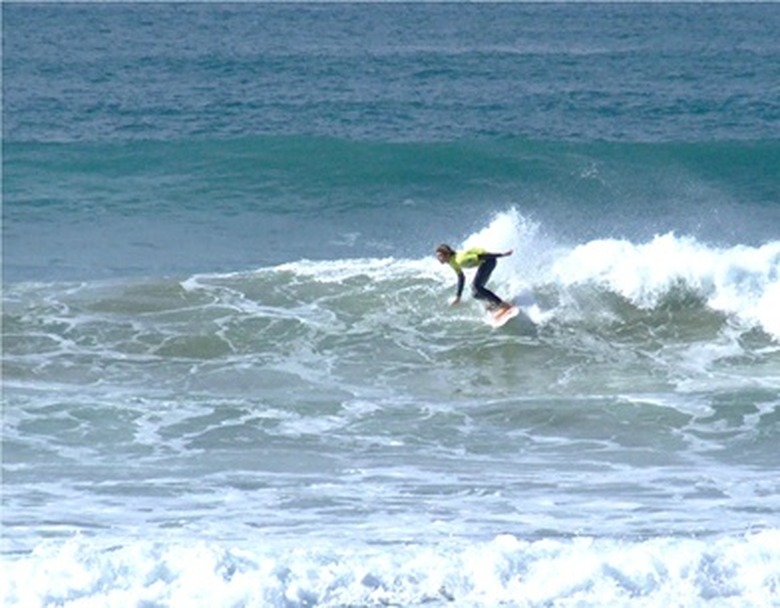How Does ATP Work?
The small molecule ATP, which stands for adenosine triphosphate, is the main energy carrier for all living things. In humans, ATP is a biochemical way to store and use energy for every single cell in the body. ATP energy is also the primary energy source for other animals and plants.
ATP Molecule Structure
ATP Molecule Structure
ATP is made up of the the nitrogenous base adenine, the five-carbon sugar ribose and three phosphate groups: alpha, beta and gamma. The bonds between the beta and gamma phosphates are particularly high in energy. When these bonds break, they release enough energy to trigger a range of cellular responses and mechanisms.
Turning ATP Into Energy
Turning ATP Into Energy
Whenever a cell needs energy, it breaks the beta-gamma phosphate bond to create adenosine diphosphate (ADP) and a free phosphate molecule. A cell stores excess energy by combining ADP and phosphate to make ATP. Cells get energy in the form of ATP through a process called respiration, a series of chemical reactions oxidizing six-carbon glucose to form carbon dioxide.
How Respiration Works
How Respiration Works
There are two types of respiration: aerobic respiration and anaerobic respiration. Aerobic respiration takes place with oxygen and produces large amounts of energy, while anaerobic respiration does not use oxygen and produces small amounts of energy.
The oxidation of glucose during aerobic respiration releases energy, which is then used to synthesize ATP from ADP and inorganic phosphate (Pi). Fats and proteins may also be used instead of six-carbon glucose during respiration.
Aerobic respiration takes place in the mitochondria of a cell and occurs over three stages: glycolysis, the Krebs cycle and cytochrome system.
ATP During Glycolysis
ATP During Glycolysis
During glycolysis, which happens in the cytoplasm, six-carbon glucose breaks down into two three-carbon pyruvic acid units. The hydrogens that are removed join with the hydrogen carrier NAD to make NADH2. This results in a net gain of 2 ATP. The pyruvic acid enters the matrix of the mitochondrion and goes through oxidation, losing a carbon dioxide and creating a two-carbon molecule called acetyl CoA. The hydrogens that have been taken away join with NAD to make NADH2.
ATP During the Krebs Cycle
ATP During the Krebs Cycle
The Krebs cycle, also known as the citric acid cycle, produces high-energy molecules of NADH and flavin adenine dinucleotide (FADH2), plus some ATP. When acetyl CoA enters the Krebs cycle, it combines with a four-carbon acid called oxaloacetic acid to make the six-carbon acid called citric acid. Enzymes cause a series of chemical reactions, converting the citric acid and releasing high-energy electrons to NAD. In one of the reactions, enough energy is released to synthesize an ATP molecule. For each glucose molecule there are two pyruvic acid molecules entering the system, meaning two ATP molecules are formed.
ATP During Cytochrome System
ATP During Cytochrome System
The cytochrome system, also known as the hydrogen carrier system or electron transfer chain, is the part of the aerobic respiration process that produces the most ATP. The electron transport chain is formed of proteins on the mitochondria's inner membrane. NADH sends hydrogen ions and electrons into the chain. The electrons give energy to the proteins in the membrane, which is then used to pump hydrogen ions across the membrane. This flow of ions synthesizes ATP.
Altogether, 38 ATP molecules are created from one glucose molecule.
Cite This Article
MLA
Gillespie, Claire. "How Does ATP Work?" sciencing.com, https://www.sciencing.com/atp-work-7602922/. 15 August 2018.
APA
Gillespie, Claire. (2018, August 15). How Does ATP Work?. sciencing.com. Retrieved from https://www.sciencing.com/atp-work-7602922/
Chicago
Gillespie, Claire. How Does ATP Work? last modified March 24, 2022. https://www.sciencing.com/atp-work-7602922/
